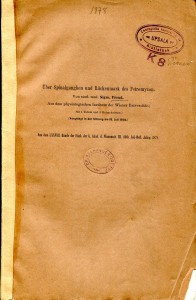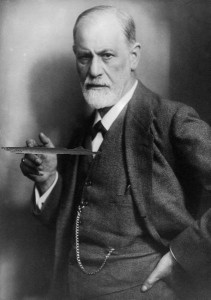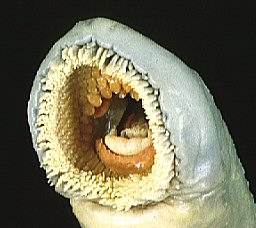Life is full of sur prises, strange revelations, or maybe just shortcut or short memory. Tidying up my office the other day, this tractate caught hold of my curious eye. A not so short dissertation of the spinal ganglia and the spinal cord in the lamprey, authored by the medical student Sigm. Freud [Sigmund Freud], and published in the Proceedings of the royal Academy of Sciences in Vienna, Austria in 1878. Same journal which carried so many of the more famous ichthyologist Franz Steindachner.
prises, strange revelations, or maybe just shortcut or short memory. Tidying up my office the other day, this tractate caught hold of my curious eye. A not so short dissertation of the spinal ganglia and the spinal cord in the lamprey, authored by the medical student Sigm. Freud [Sigmund Freud], and published in the Proceedings of the royal Academy of Sciences in Vienna, Austria in 1878. Same journal which carried so many of the more famous ichthyologist Franz Steindachner.
Wow, psychoanalysis started with the dissection of the central nervous system of one of the most primitive fishes! Only hagfish is lower on the tree, beyond that there are only invertebrates. Or maybe not. Whereas Freud’s ichthyological career passed relatively unnoticed among ichthyologists, he is well known as a neuroanatomist among the physiologists (neurophysiologists, to be precise). He started his career with eel, spending four weeks trying to find male eel in Trieste, Italy. Up till then testes had not been found in European eel. His studies on lampreys resulted in two papers and one methodological note; the eel study in one paper, somewhat inconclusive, but later confirmed to have located the testes. Freud apparently preferred neuroanatomy and remained with this subject for years.
My recollection of Freudian psychoanalysis (in which fish are scarce) is the more frequently told interpretation of snakes in dreams as the [fear of] penises. The myriad of dream analysis scam sites on the web nodd affirmatively. But we all know Freud must have been inspired by the eels and lampreys more than snakes into developing his untestable dream explanations. And people rarely dream about eels and even less about lampreys. They rather dream of snakes, although there were never any snakes in the dreams I remember (but plenty of fish). So, on the simple side of having it, psychoanalysis is all about slithering fish.
I doubt there is any 20th Century ichthyologist more famous than Sigmund Freud. Regrettably for him, he is not in boldface in the annals of fish science. For what I can find there are more batmani or [led] zeppelini than freudi among fish, so not even more famous than a comics character or a guitar hero (not a single freudi, in fact). I am not sure this entry does anything to help improve on the recognition and fame of Sigmund Freud, but I am sure many will be interested to know about this connection between the eel and the mind.
Freud’s ichthyological contributions
- Freud, S. 1877. Über den Ursprung der hinteren Nervenwurzeln im Rückenmarke von Ammocoetes (Petromyzon Planeri). Sitzungsberichte Mathematisch-Naturwissenschaftlichen Classe der der k. Akademie der Wissenschaften, Wien, Abt. III, 75: 15-27.
- Freud, S. 1877. Beobachtungen über Gestaltung und feineren Bau der als Hoden beschriebenen Lappenorgane des Aals. Sitzungsberichte der Mathematisch-Naturwissenschaftlichen Classe der k. Akademie der Wissenschaften, Wien, Abt. III, 75: 419-431.
- Freud, S. 1878. Über Spinalganglien und Rückenmark des Petromyzon. Sitzungsberichte der Mathematisch-Naturwissenschaftlichen Classe der k. Akademie der Wissenschaften, Wien, Abt. III, 78: 81–167.
- Freud, S. 1879. Eine Notiz über eine Methode zur anatomischen Präparation des Nervensystems. Zentralblatt der medizinischen Wissenschaft, 17/26: 468-469.
Species referenced
Otocinclus batmani Lehmann, 2006 in Neotropical Ichthyology
Lepidocephalichthys zeppelini Havird & Tangjitjaroen, 2006 in Zootaxa
The lamprey studied by Freud may have been Lampetra planeri
Image credits
Freud portrait by Max Halberstadt, modified; original public domain; modified CC-BY-NC Sven Kullander, 2010
Other images Sven Kullander, CC-BY-NC, 2010

